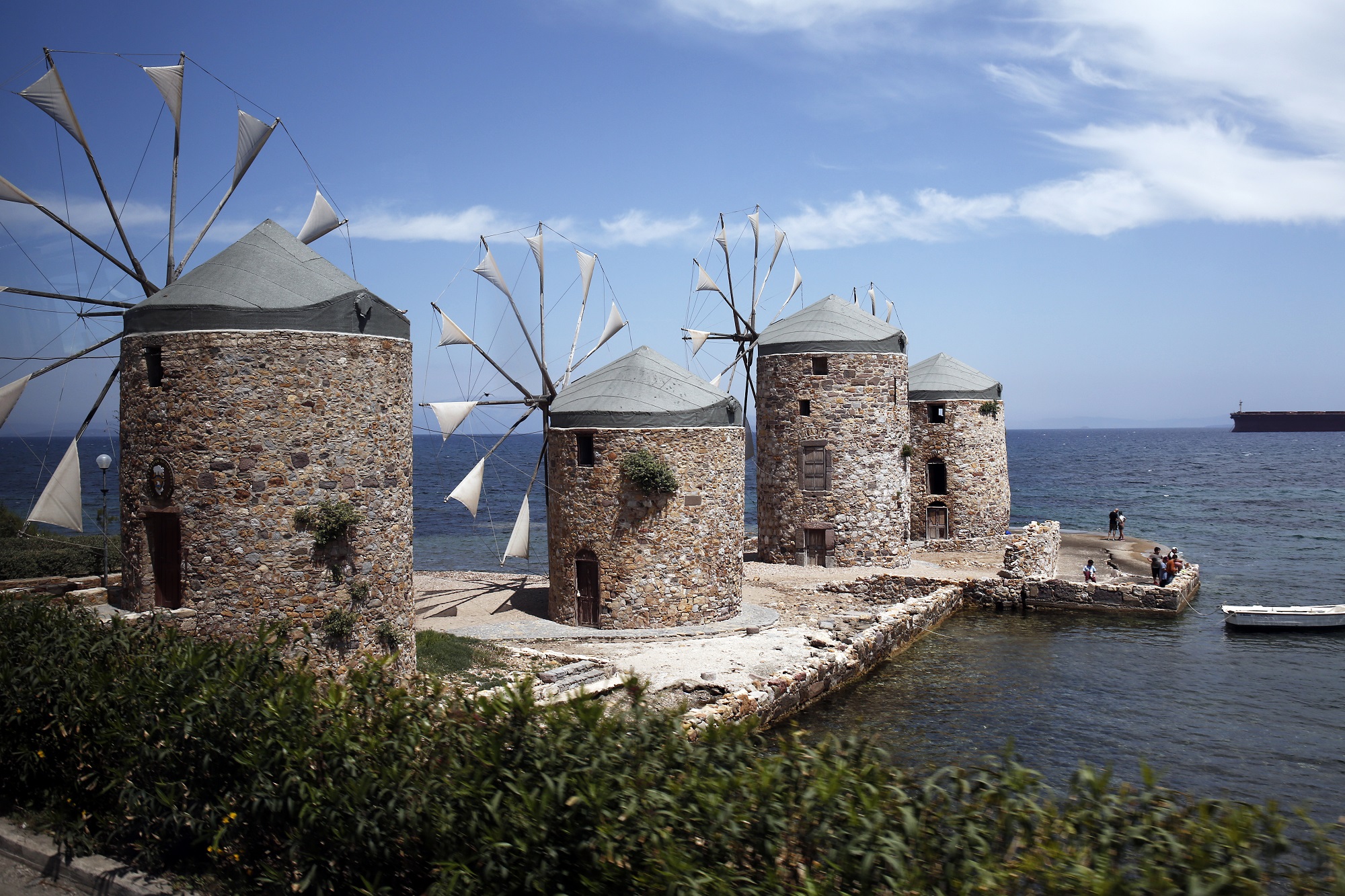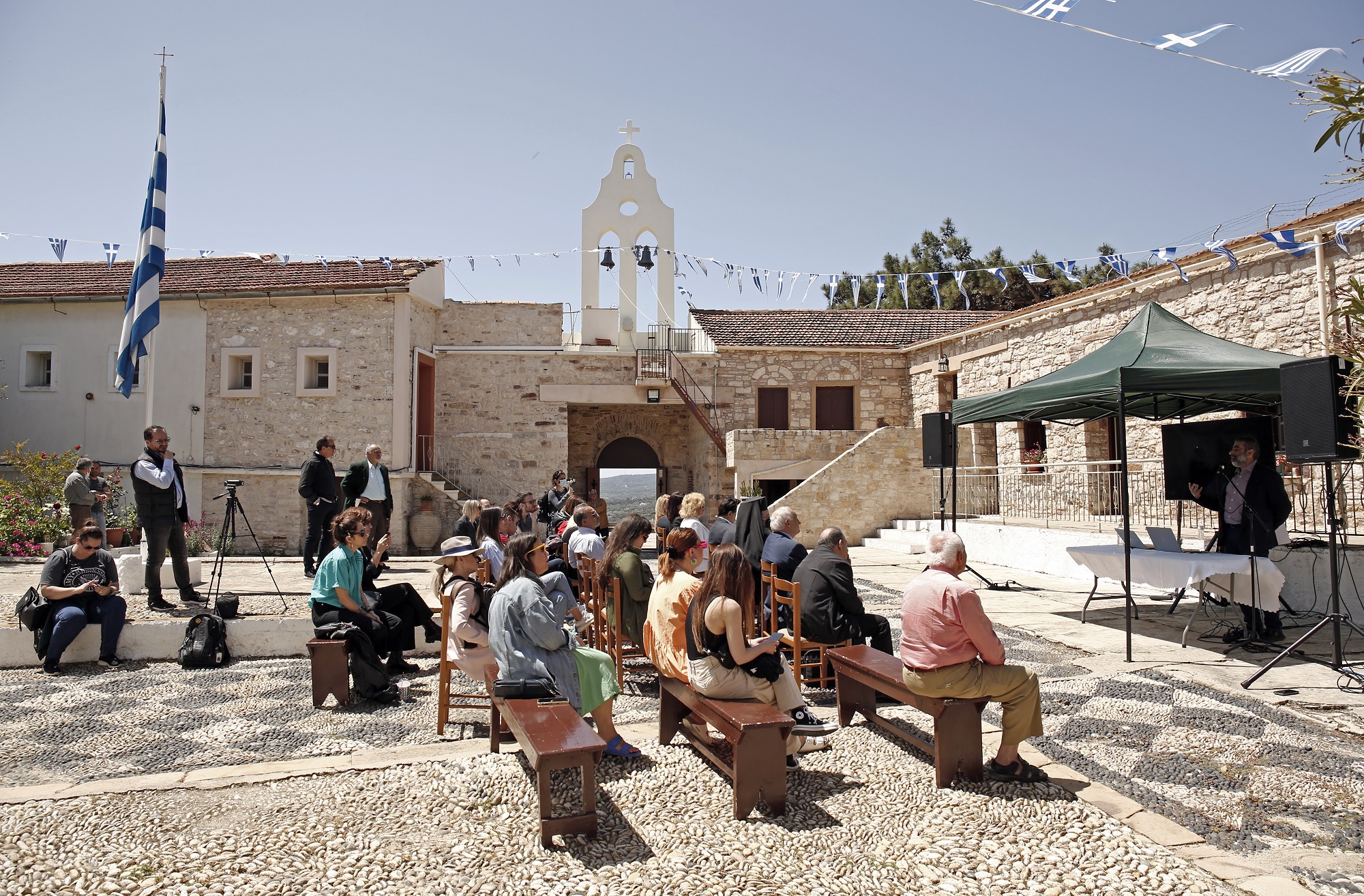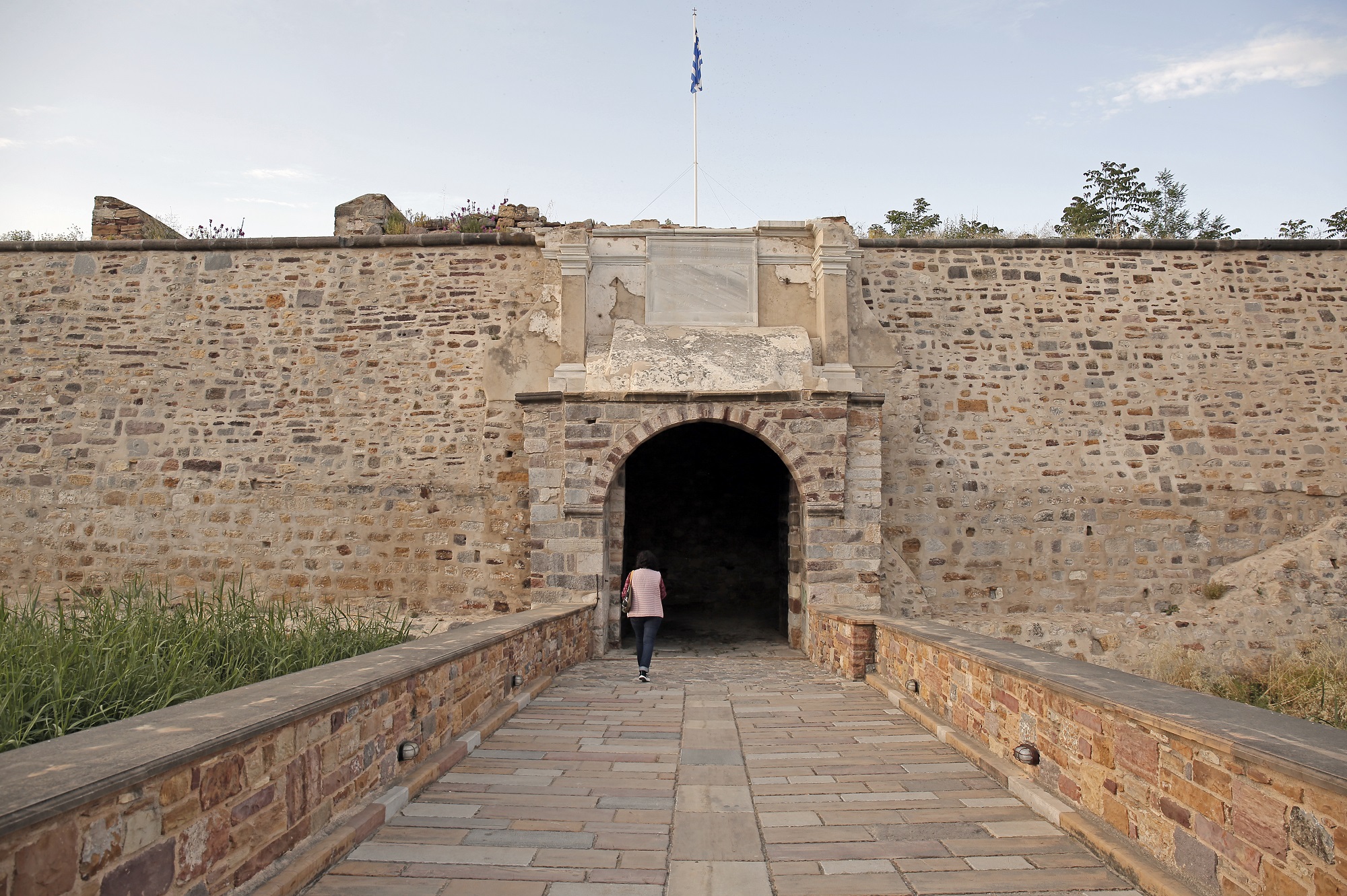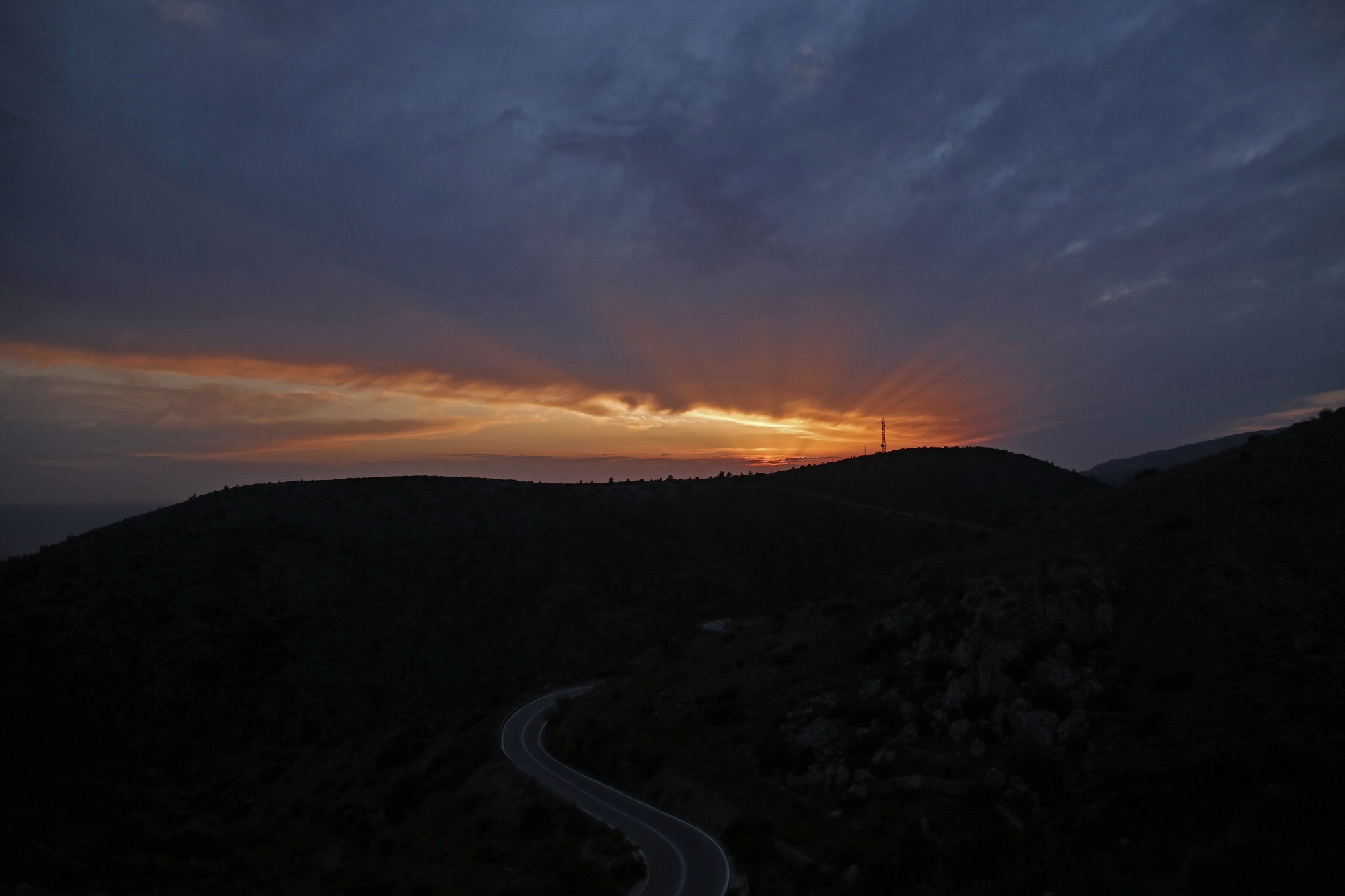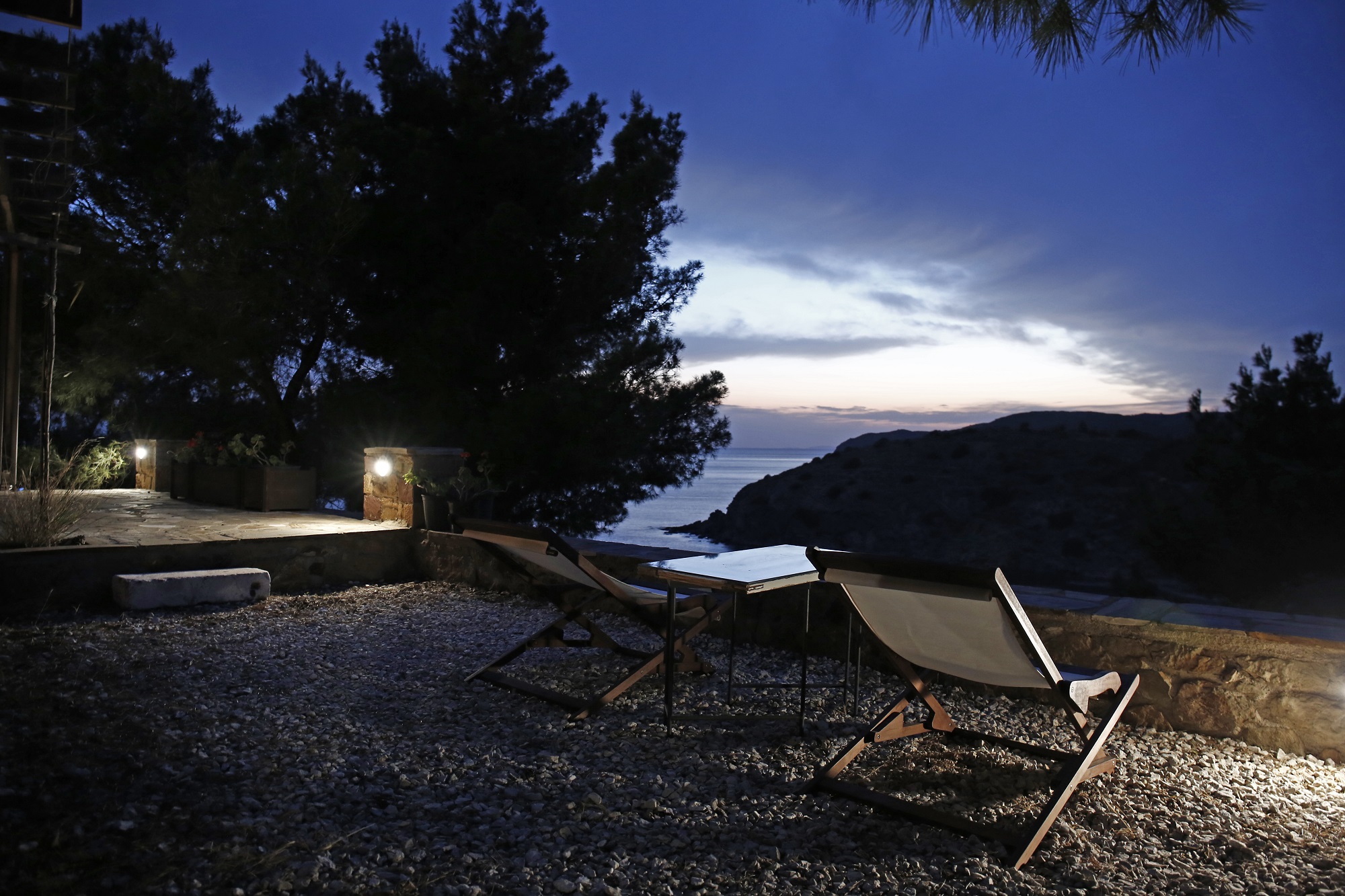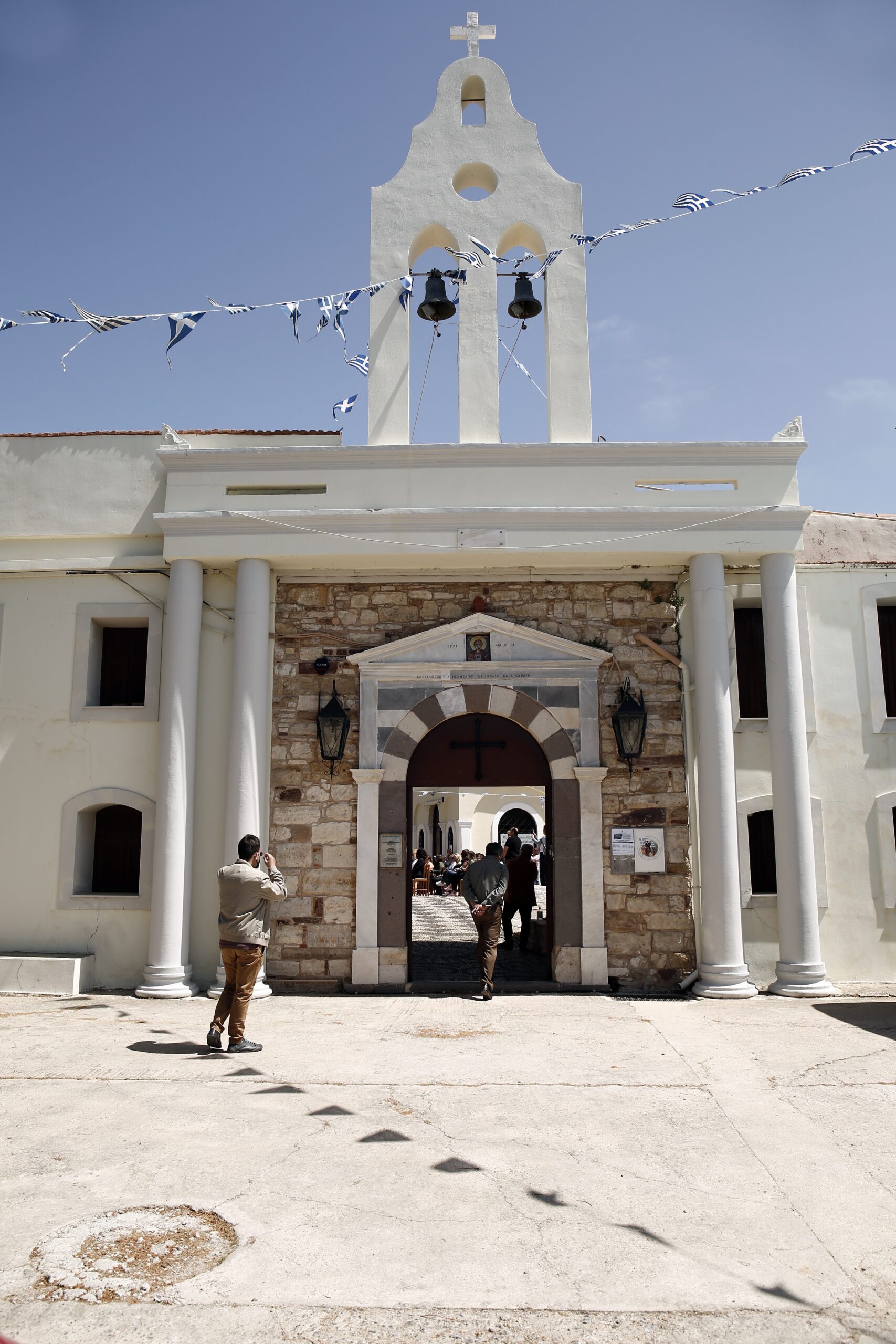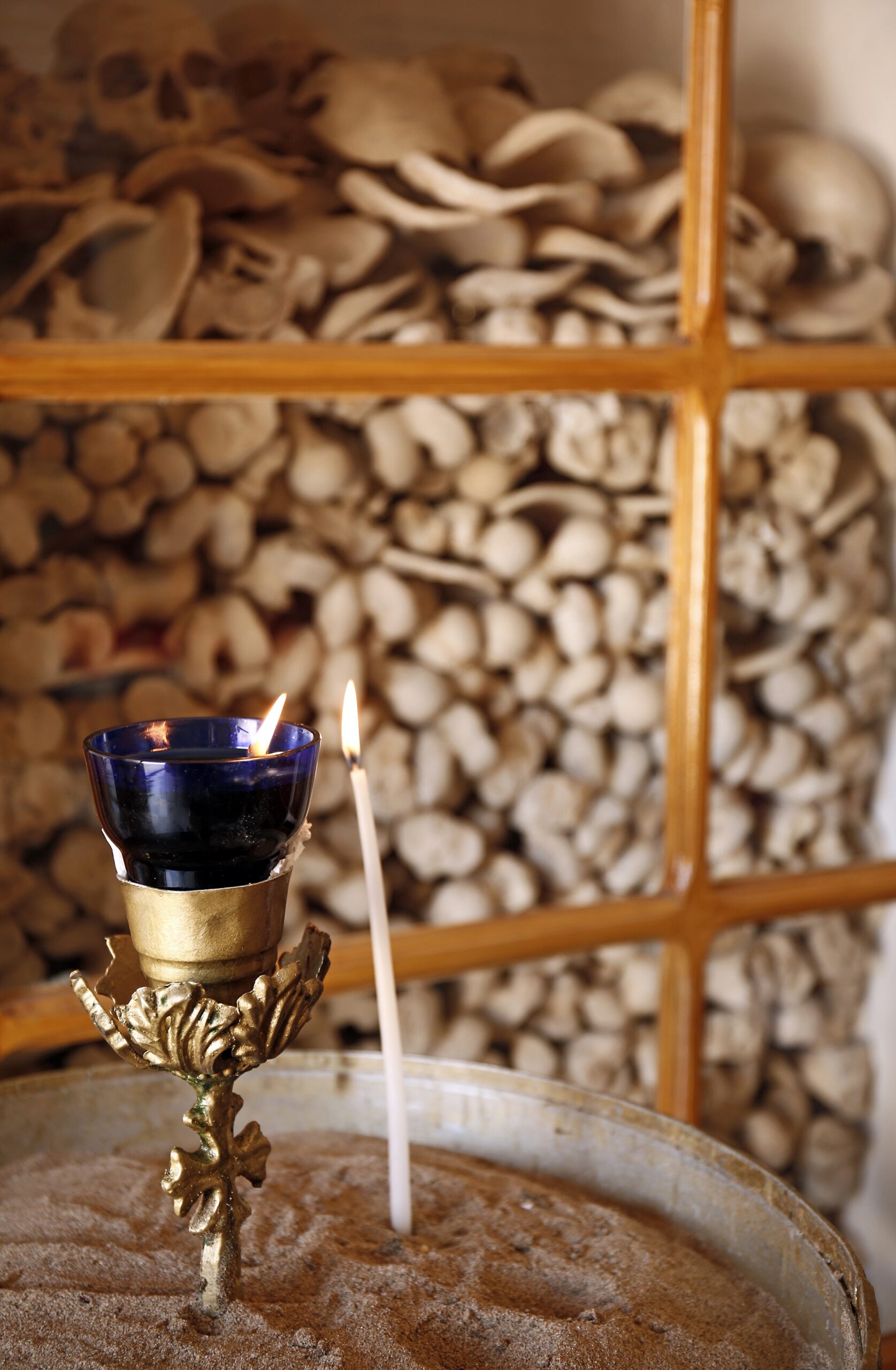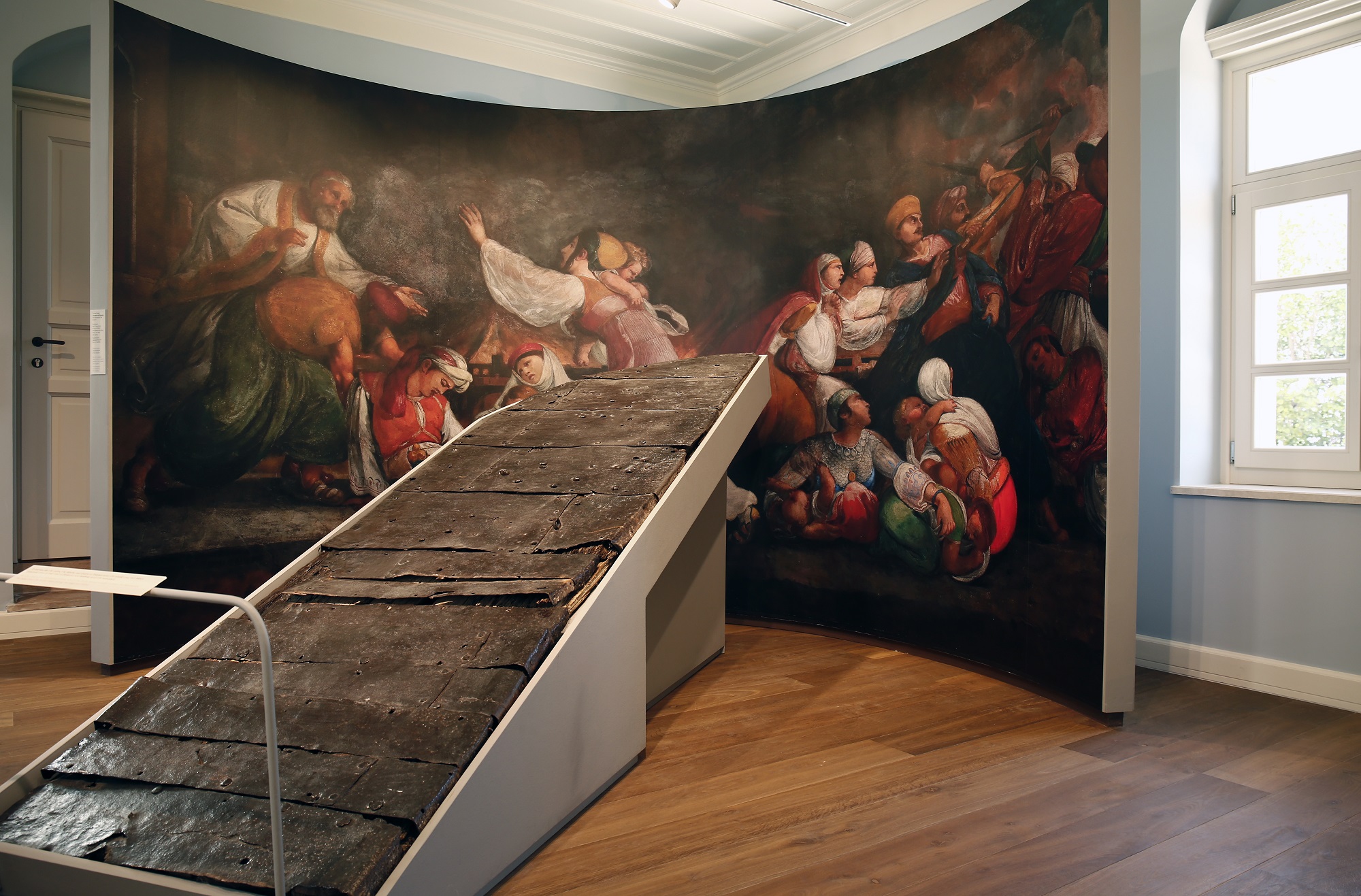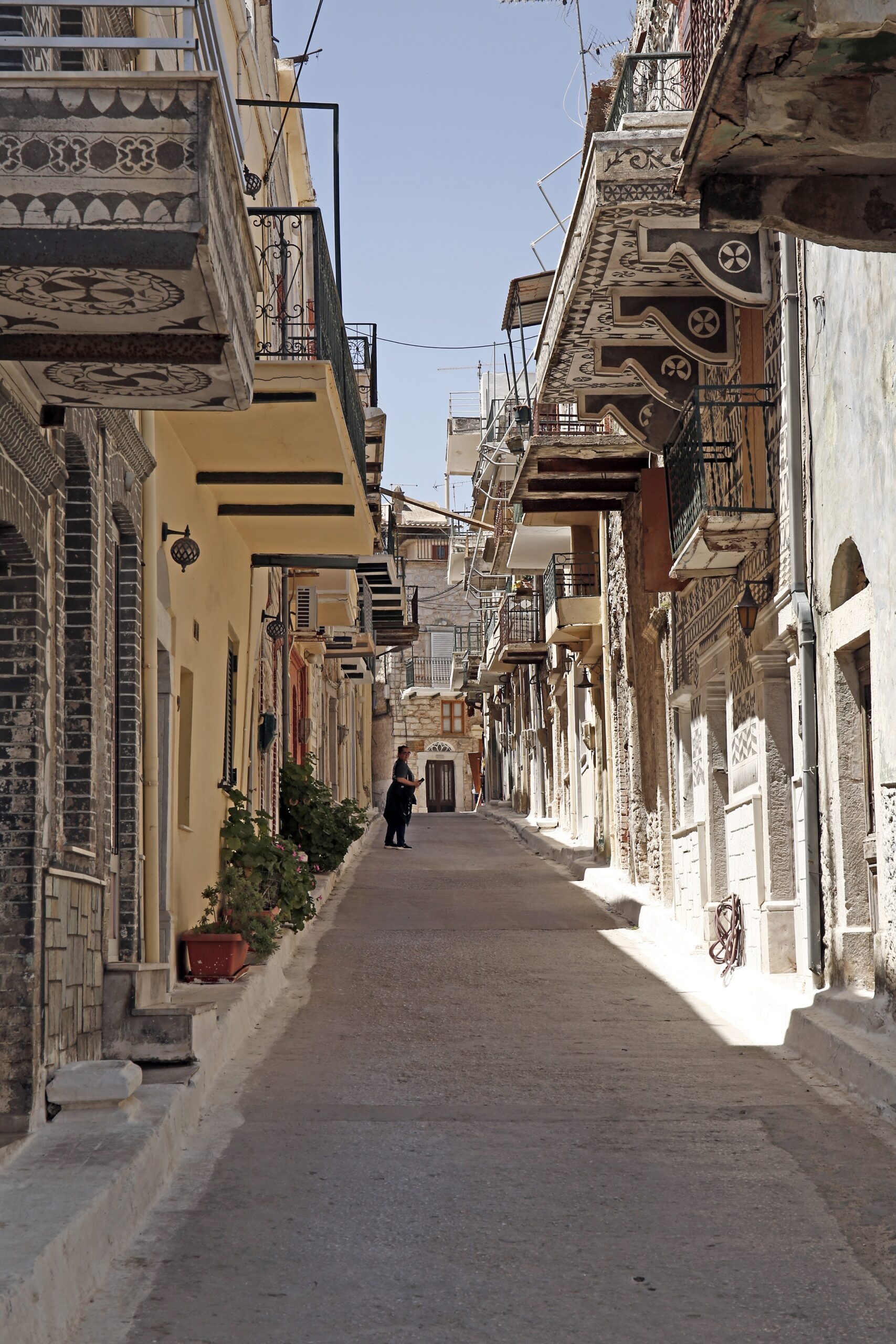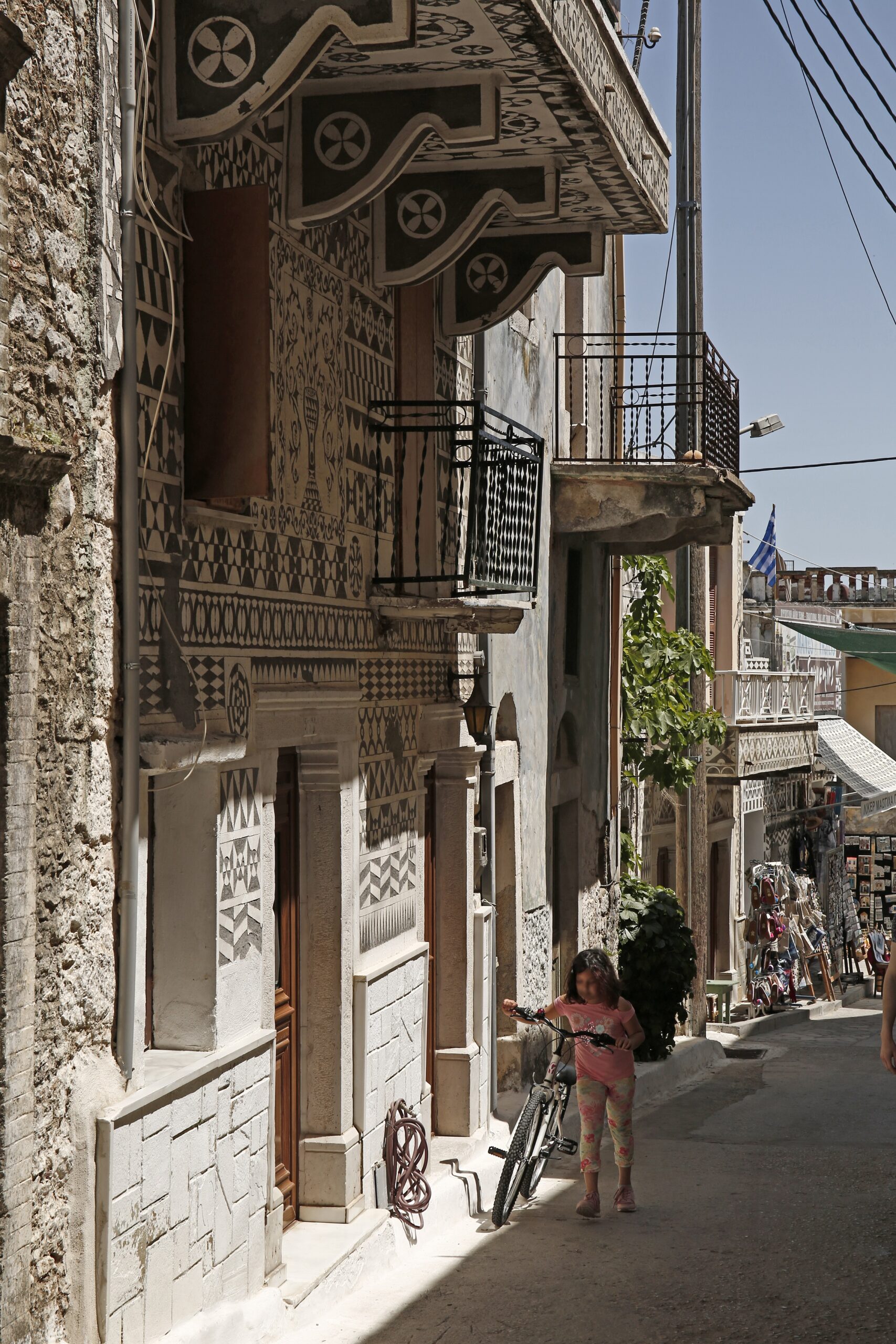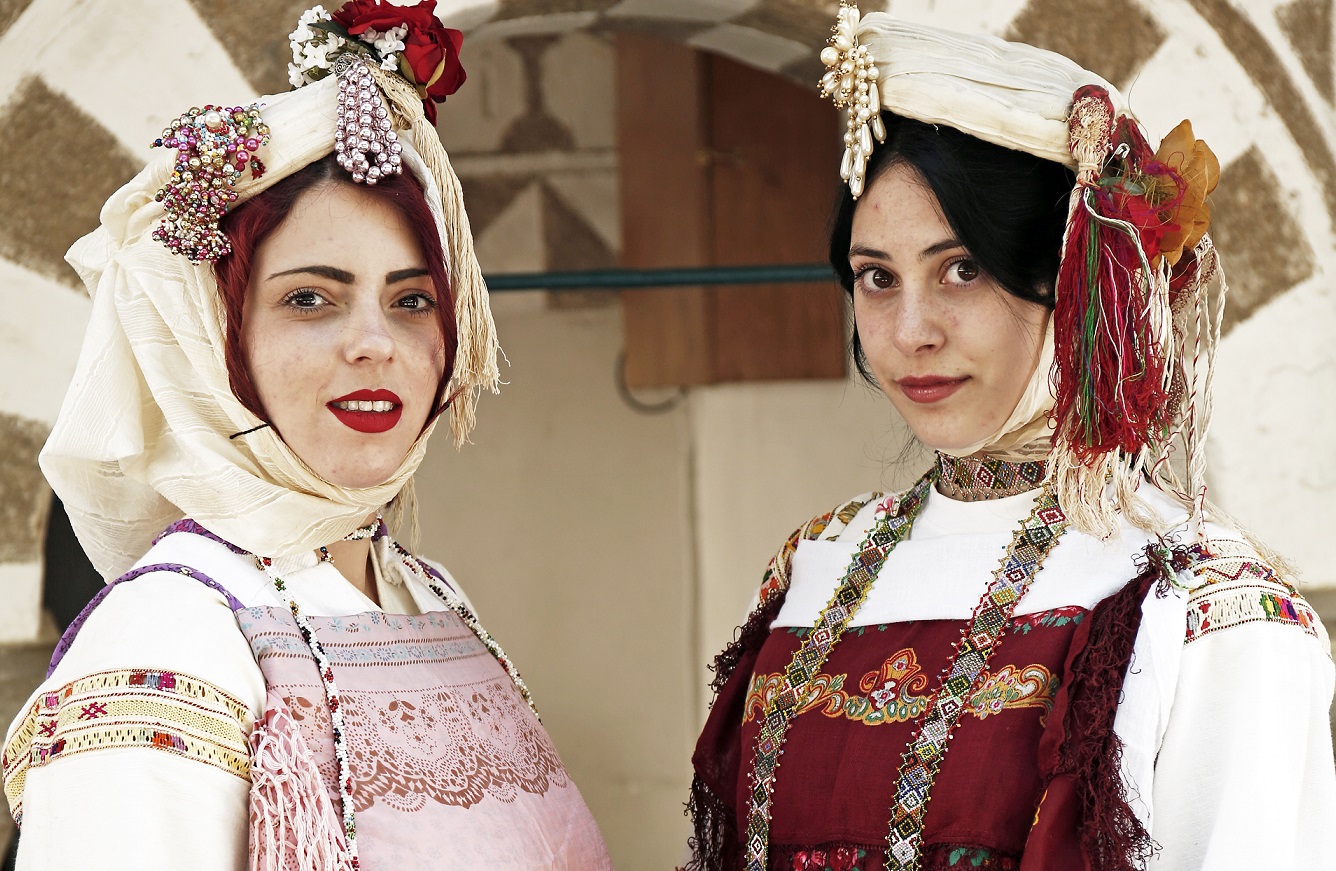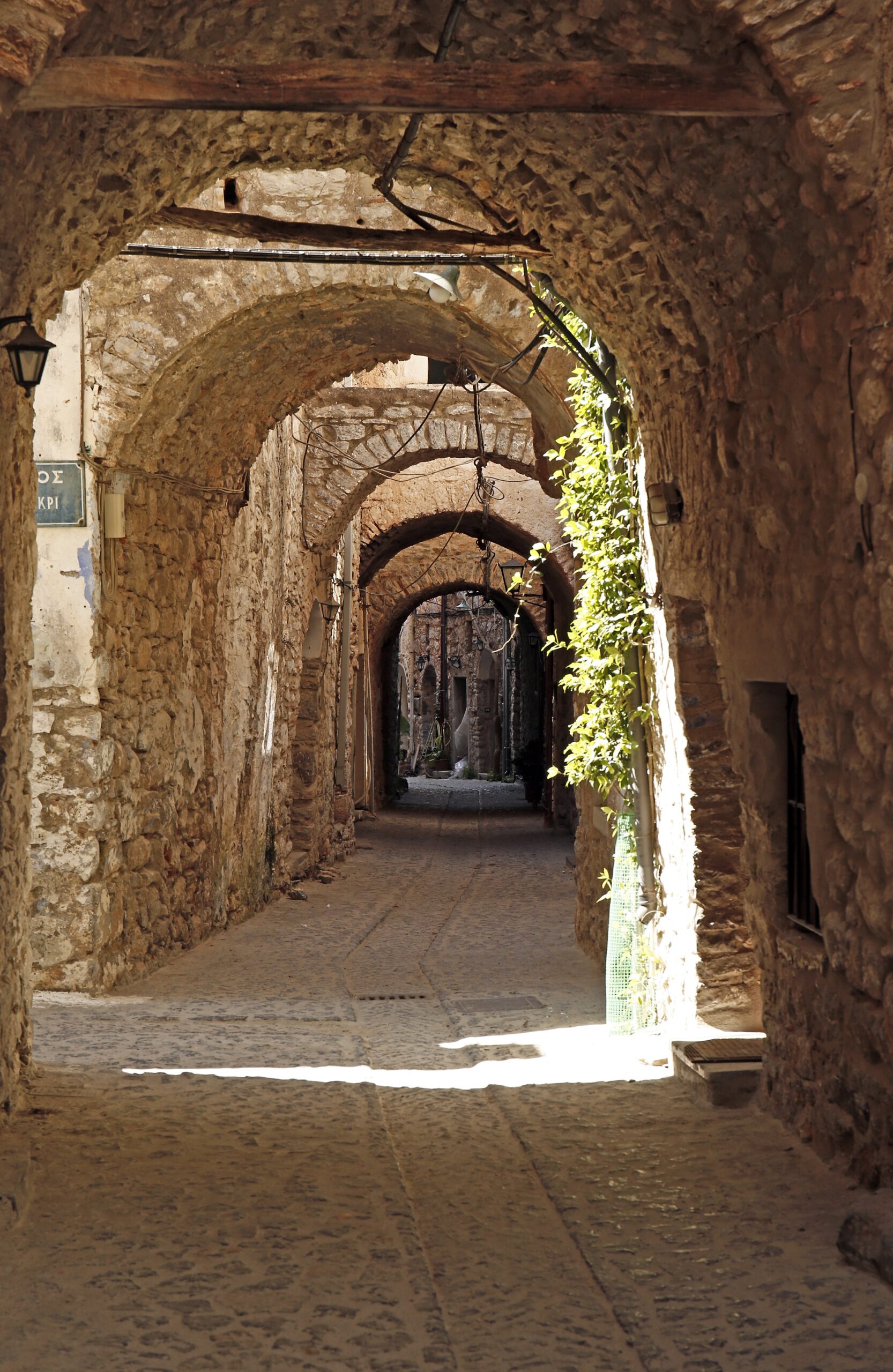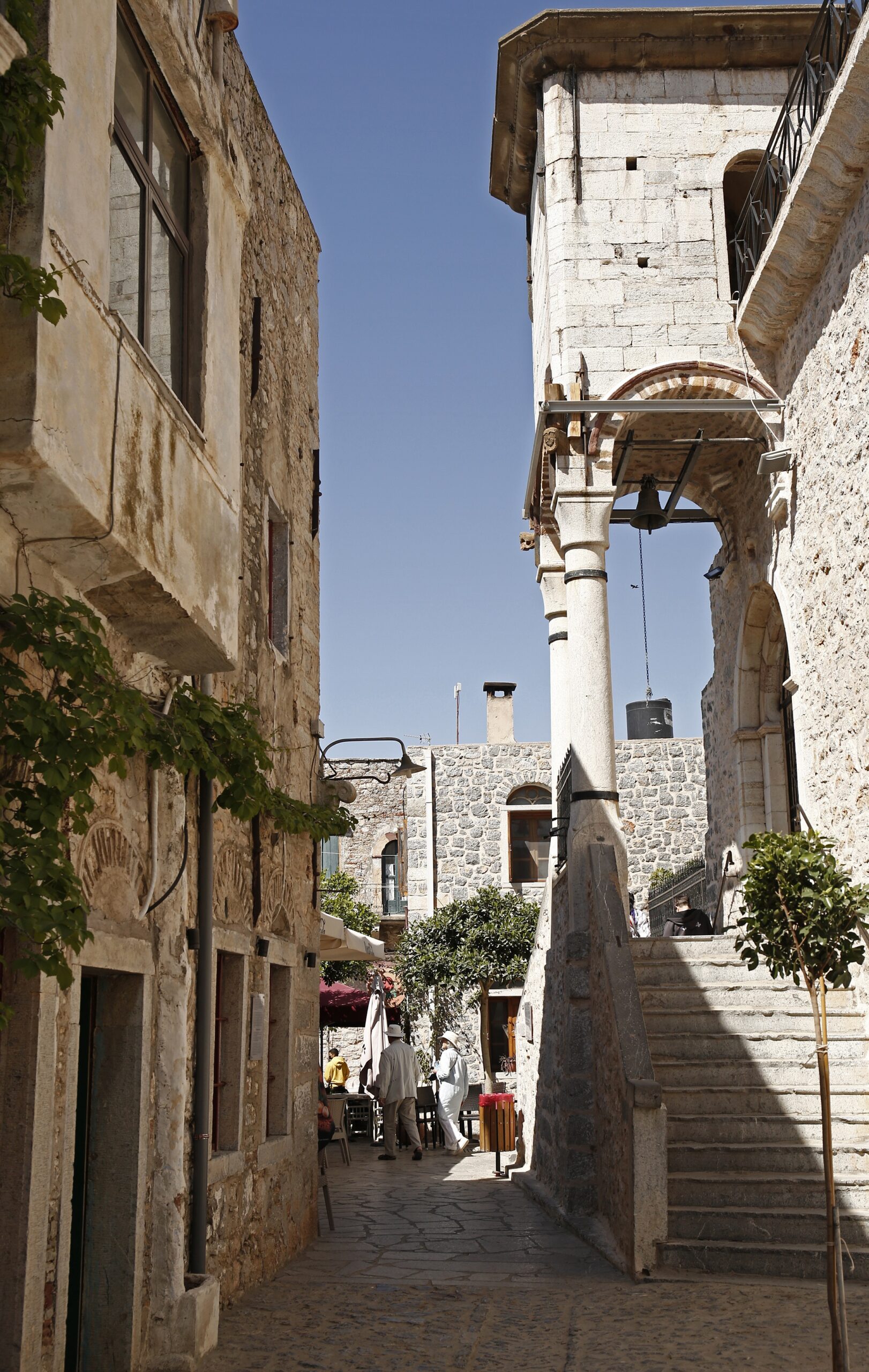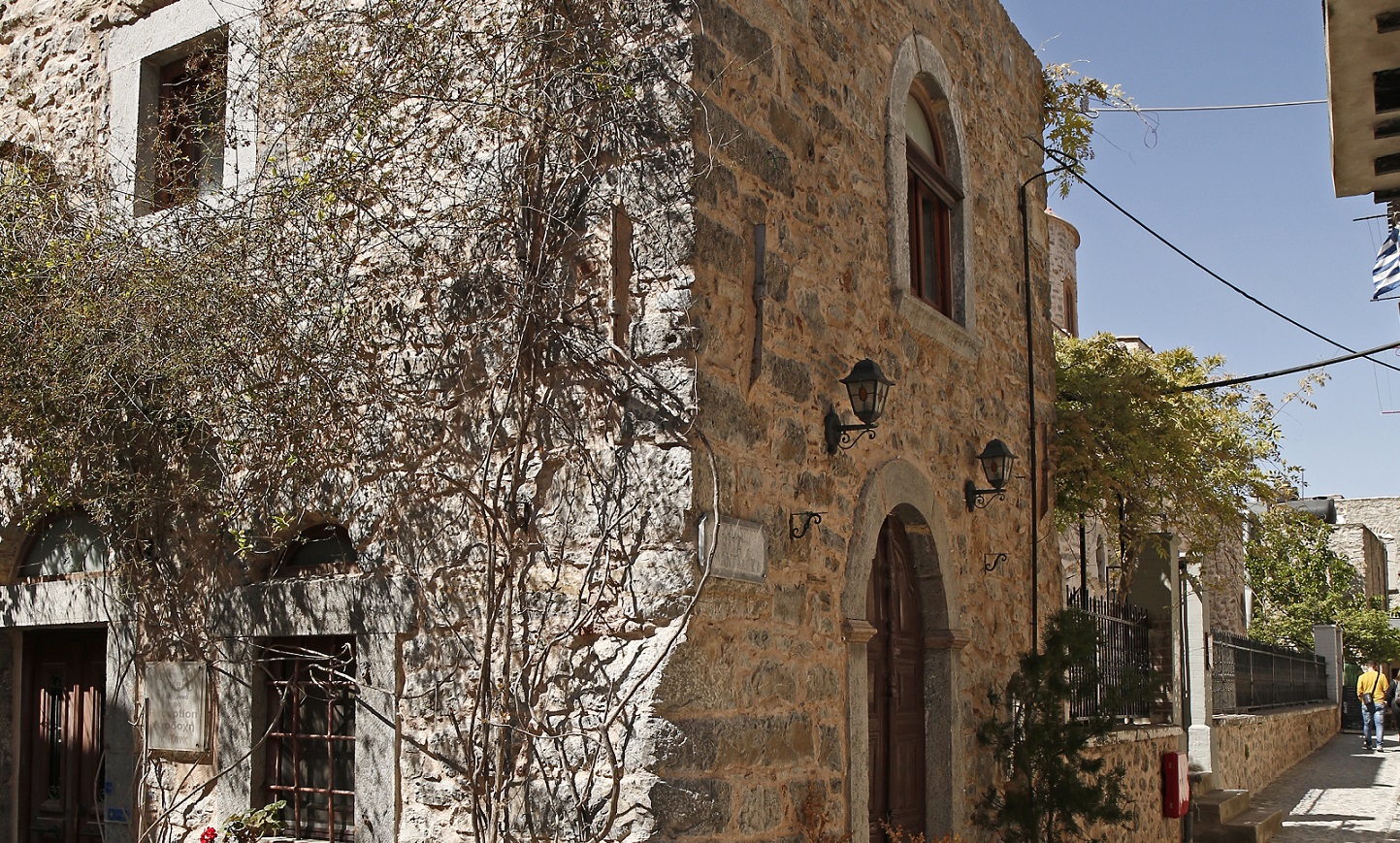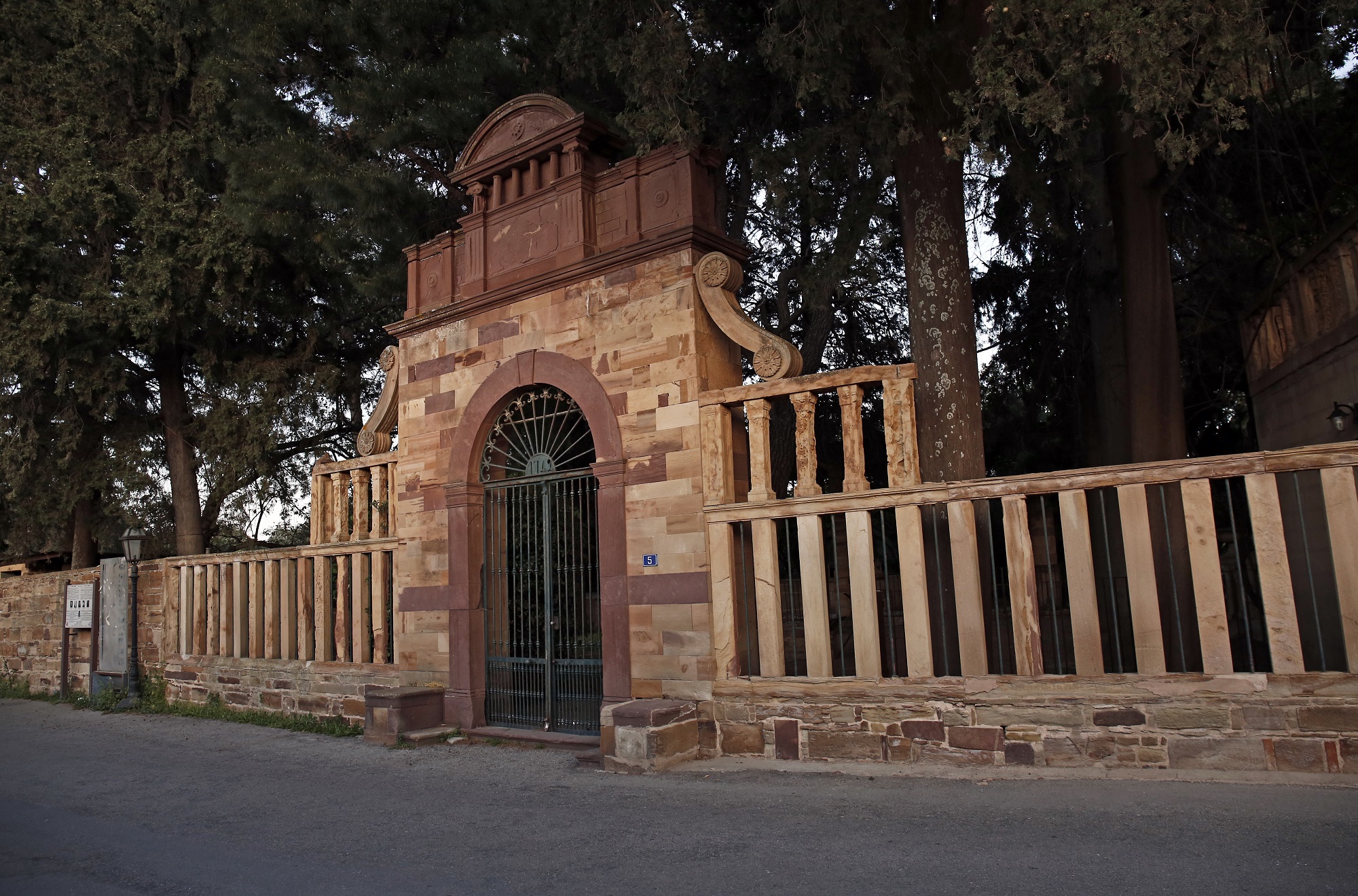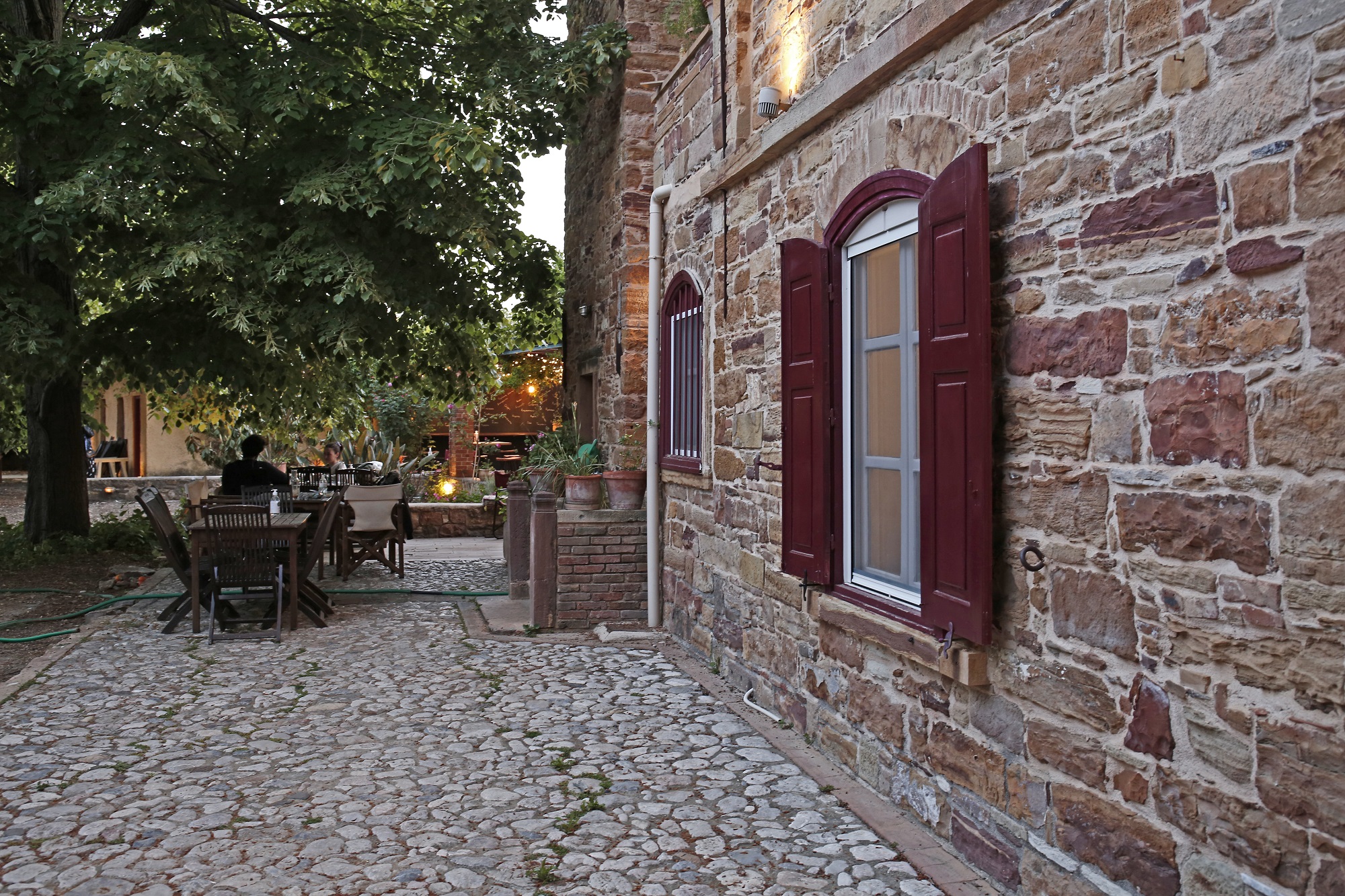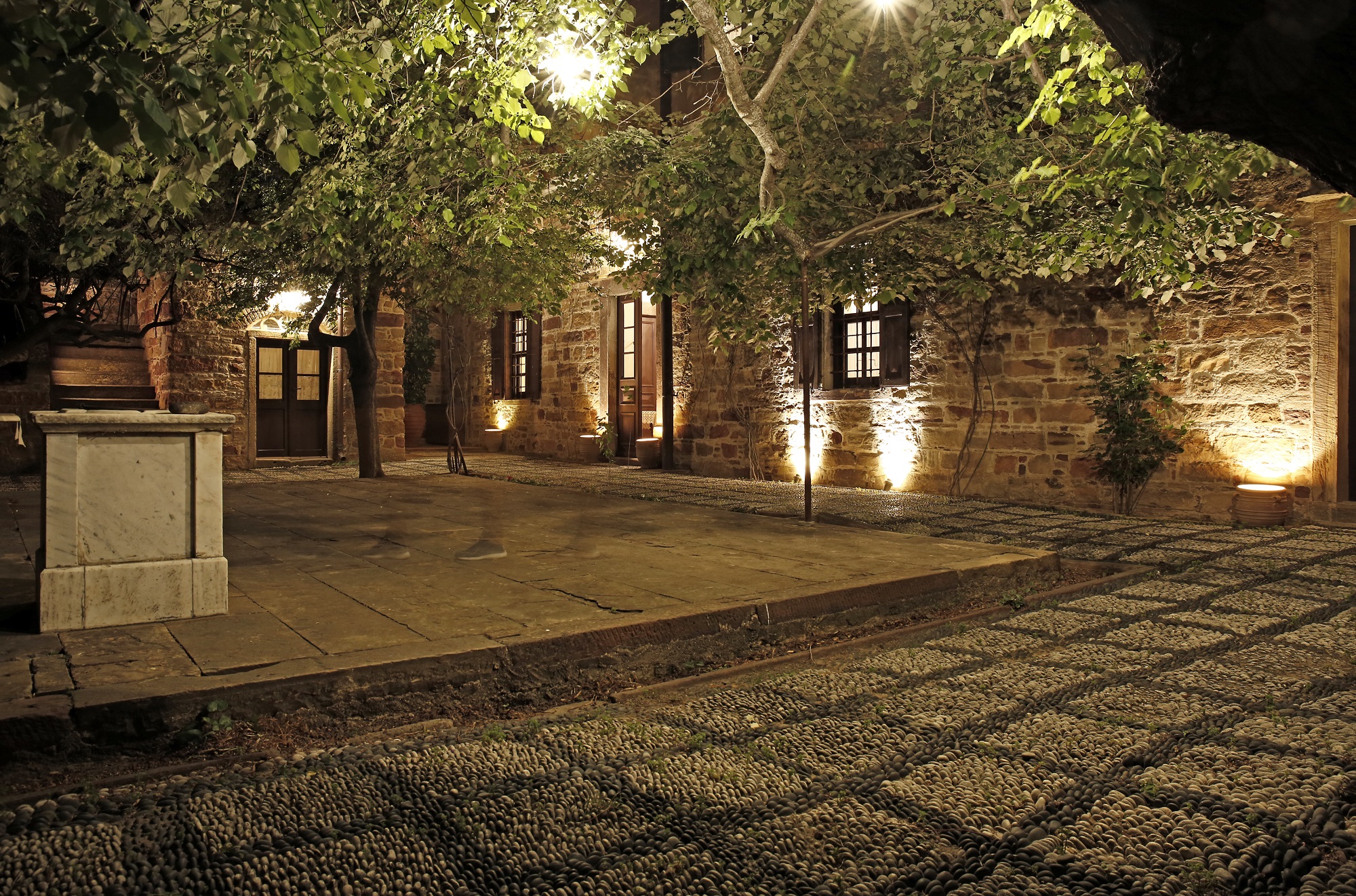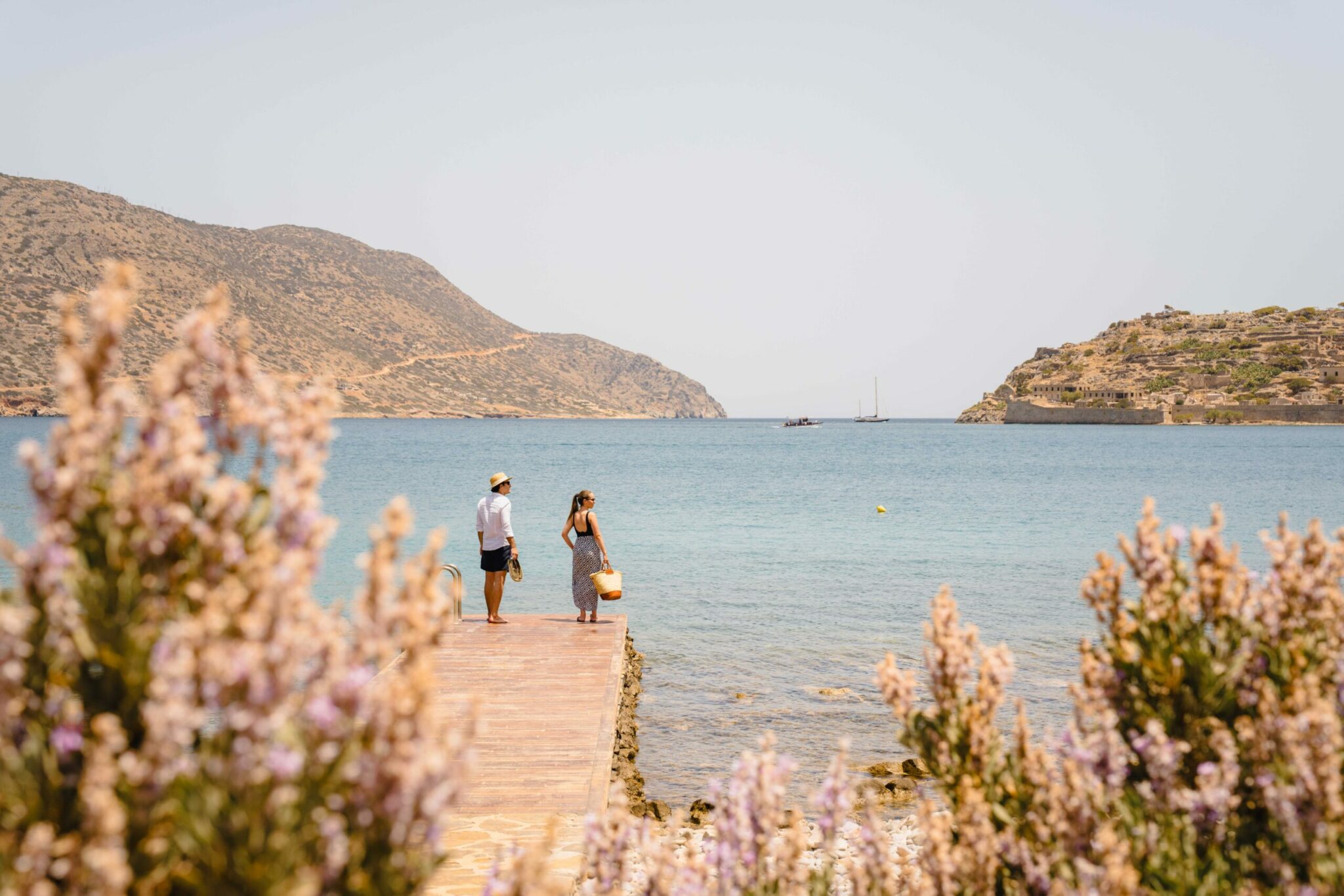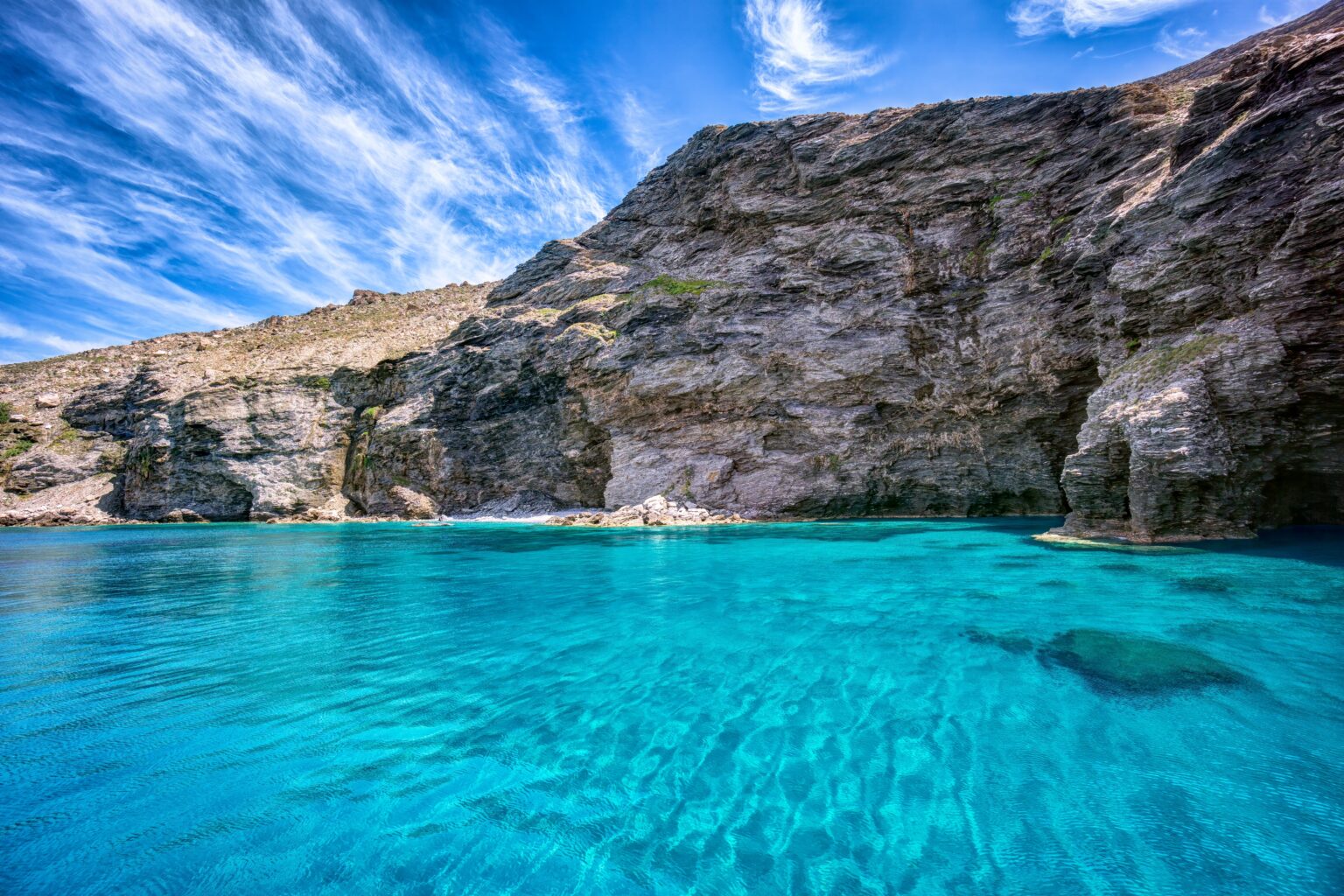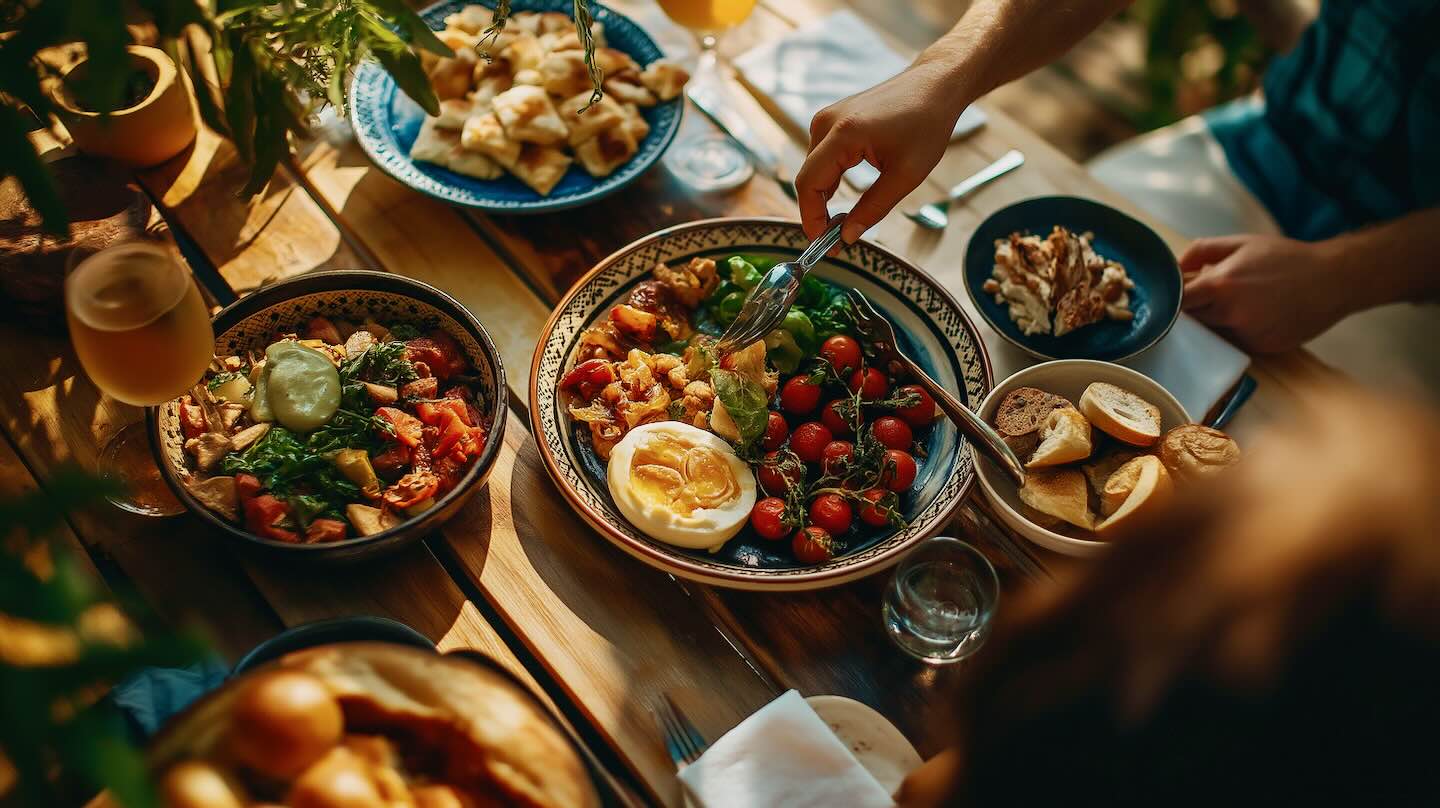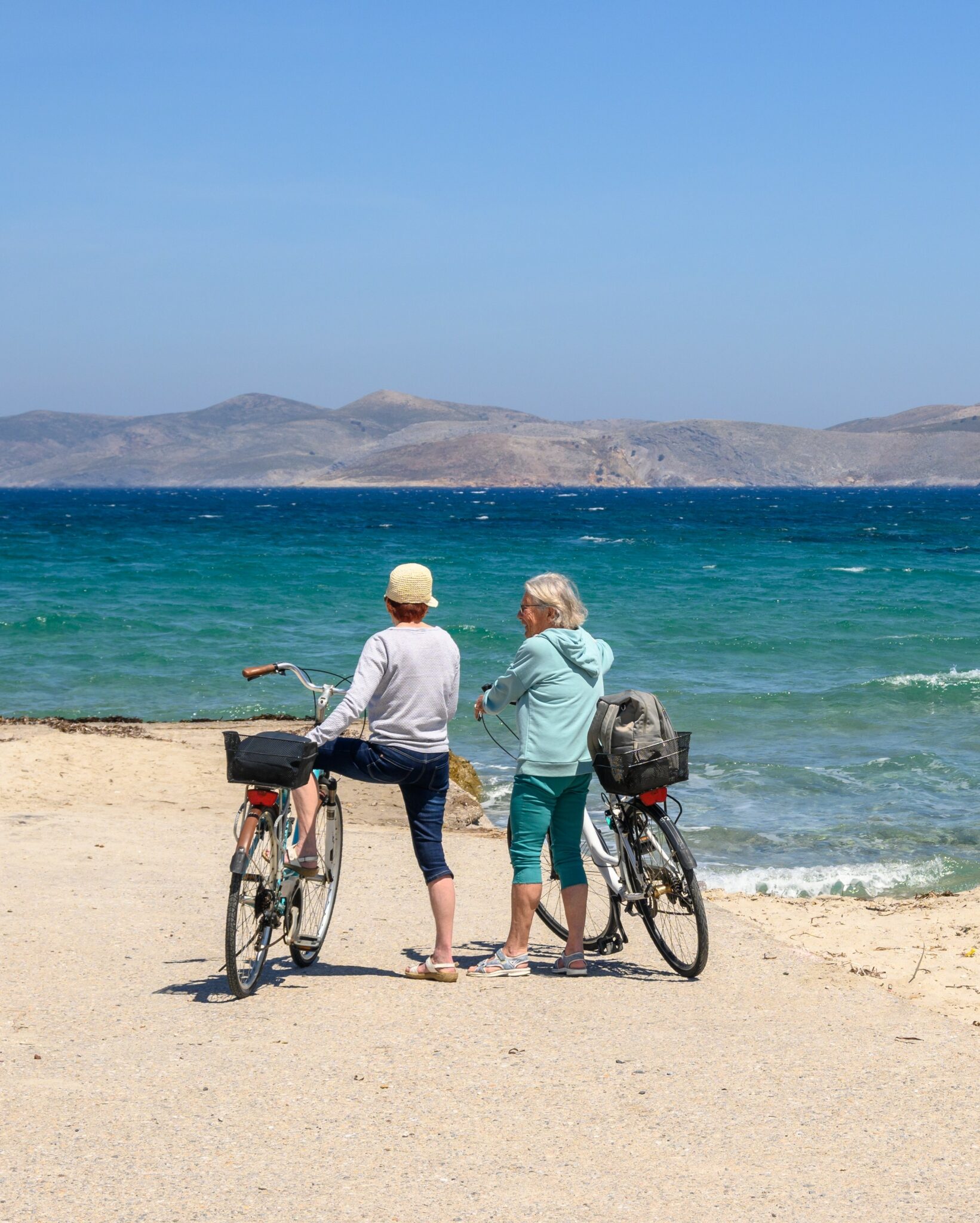Medieval castles hidden away among imposing cypress trees, the scent of mastic mixing with that of the oranges and the lemons, stone windmills standing proud at scenic bays, a setting that has remained unchanged by time.
These are just a few of Chios characteristics that are rare elsewhere. Each time you visit Chios, it’s like adding a piece to an endless, colourful puzzle. For example, I’d seen the beauty of Kampos, the picturesque villages of Pyrgi and Mesta, and the deserted 18th century churches – that seem out of a Greek Tuscany – but I had no idea about the medieval beauties in the northern, more isolated part of the island.
An invitation from the North Aegean region administration was enough for me to discover one of the most historic and beautiful borders of Greece: the scenery of northern Chios with the medieval villages, the traditional settlements and the imposing castles, perched on the rocks. And we also had the chance to tour the whole island and enjoy unique villages like Mavra Volia, to try fresh seafood at ouzeris (ouzo taverns) next to the sea, as well as game at stone taverns in the mountains, and discover, once more, the still strong Genovese influence at this uniquely and proudly Greek destination.
The uniqueness of Chios
“The Byzantine Christian past of Chios is present everywhere on the island, there are written sources and monuments that clearly show the continuity from the Byzantine era,” our guide, historian and researcher Mihalis Varlas, tells us. He explains that each stone at each path reveals memories of the island’s Byzantine past, the harsh battles, the cosmopolitan moments of an island that already in 1700, when the caravans arrived, had accomplished the harmonious coexistence of the people of the East and the West.
Chios is unique. And this becomes even more obvious nowadays, since the island has managed to resist the sometimes-destructive tourist development, presenting its history immediately and directly: only here can you see so many mansions –that have survived the test of time, becoming part of modern history– next to the mastic trees, on the endless nature paths and all around the island’s pristine natural beauty. “Even its name sounds fragrant,” one of the most famous 18th century travellers, Frenchman Pierre Augustin De Guy, said, thrilled with the villages, the caves and the island’s culture.
The truth is that, from the isolated areas in the north, with the abandoned medieval castles and the gorgeous beaches, and from the middle part, with the villages perched on the mountain, filled with roses, overlooking the Aegean and the coast of Asia Minor, to the south of the island, with the Mastic villages and the Genovese settlements, you go through a big part of Greek history.
You feel like you’ve explored different lands, through the images that have remained intact, reminding the legends and myths, and some of the most painful periods of recent history (like the 1822 Chios massacre), always right next to the island’s beauties – the way Homer liked. So, it seems reasonable that it is believed that Homer was born here.
The unknown, magical Volissos
We’re in perhaps the most beautiful, unknown and misunderstood part of Chios, a place that resembles Mystras, and the most renowned villages of Mani – but with Aegean’s wonderful blue enveloping the stone masses. “These parts of the island are linked to the pro-Genovese legends, straight back to the 6th century,” Mihalis Varlas tells us, revealing the magical connection of oral history and tradition with parts of the past.
In fact, the homonymous bay of Volissos was the location of many war operations against the pirates who tried to conquer the castle, and the legendary lookouts still survive. In the late 19th century, they used to breed silkworms in those tucked-away parts of the castle. So, the harsh, imposing and at the same time fine and fragile vibe of the place makes sense – it’s the stone and the butterflies.
The smell of pine trees and the sea is strong at the higher parts, like for example at Boutique Hotel “Volissos Holiday Homes” that has a view of the lovely Psara. A true refuge of tranquillity, where the owner, active and dynamic Antigoni Maistrali, who is also the president of the Chios Hoteliers Association, welcomes us. She explains how Volissos, an isolated and inaccessible place even for the locals, has become a popular resort for French and German tourists who return here each summer.
In addition, this is where the well-known author Giannis Makridakis, who is from Chios and often writes about the island, organizes his literary workshops, as we learn, drinking the local bulk wine at the village’s famous tavern ‘Fabrica’. Furthermore, as Mihalis Varlas tells us, this where Nikos Zorbas and 1821 fighter Antonios Bournias were from.
Each summer, amazing events take place in the abandoned villages in the area of Amani –Volissos is part of Amani – like for example the Souma festival where people go around the secret alleys and come together as one large group dancing till dawn. One of the most well-known villages is Potamia, where Dimos Avdeliodis’ (who is also from Chios) film “Spring Gathering” was shot.
Agios Minas monastery
An imposing location filled with beauty and pain. The memories of this place are strong since this is where, in 1822, the Christians who tried to enter the monastery where killed. At the same time, those who had managed to enter the catholicon were burned alive.
There are still blood stains, as well as skull-shaped stains on the floor, while the bones of the innocent victims are kept in a special case, next to the altar, to be honoured in eternity by the pilgrims and visitors. There’s also a museum about the 1822 Chios Massacre where you’ll find a replica of Delacroix’s “Massacre at Chios” painting.
So, the atmosphere is heavy, in great contrast with the landscape’s beauty, since you have an unobstructed view of the sea, whose smell mixes with that of the roses. Via Dolorosa goes through each location in Chios and is linked with beauty in a hard way: with the bones from a massacre, with the legends of the land, even with the pained faces of the Saints on the icons in the church – in Nazarene style, that is, pre-Byzantine – everything connects you to the severity of the land.
Your eyes fall onto Victor Hugo’s poem “The Greek Boy”, written on one of the museum’s walls, translated by Kostis Palamas. “Les Turcs ont passes la. / All is a ruin where rage knew no bounds: /Chios is levelled, and loathed by the hounds, / For shivered yest’ reen was her lance; / Sulphurous vapors envenom the place / Where her true beauties of Beauty’s true race / Were lately linked close in the dance.”
Pyrgi
You can’t come to Chios and not visit the stunning village Pyrgi, with the uniquely decorated houses, known by the locals as ‘ksista’ a tradition that holds from the Genovese.
The patterns start at about the middle of the door and are, in the majority, geometrical designs –squares, rhombuses, triangles – often accompanied with flowers designs. The first designs were accurate replicas of the patterns on the sacred carpet that the Pope would present on the Saint Peter square, a tradition that is preserved to this day, as Thomas Karamouslis, a knowledgeable local informs us. Many of the houses feature coats of arms, remains of the grand families that lived here.
It’s a great pleasure to sit at the large square, called ‘Livadi’ (meadow) and drink Chios’ tsipouro (named Psihi – which means soul) and think about how good life is on this island. If you’re lucky, like we were, you might catch the local dancers wearing traditional costumes and performing the local dance, Pyrgoysiko, a strange, fast, passionate dance. Just like the people from Chios.
Mesta
The medieval alleys bring Sevilla to mind or a strange trip back in time, where you see knights, beautiful damsels with long hair, and conquerors. Thank God that the Genovese architecture remains intact in Mesta and is breath-taking.
The same is true about the Mikros Taxiarhis church that perfectly complements the Megalos Taxiarhis church with the lovely carved altar: an elaborate sample of Chios’ woodcarving that survives intact since 1833. It’s made with walnut lumber and has scenes from the Old and New Testament, carved in three-dimensions (like in the medieval temples) something very rare in Greece.
Leaving the lovely Mesta, we made a stop nearby, at the village’s scenic port. We had lunch at ‘Sergis’ a family run tavern that has been open since 1923. We had fresh fish and seafood, and an unforgettable urchin salad.
The gorgeous Kampos
No matter how many times you visit Kampos, it’s never enough. The 19th century stone mansions take you back in time and fill you with peace with their beauty, standing proud among the citrus orchards. Kampos is Chios’ trademark, with a huge orchard of 2,000 stremmas that has been feeding many generations throughout the years.
A big part of the island’s history has unfolded on this particular piece of land, that was enjoyed by the Czar and all the emperors who turned Chios into the most cosmopolitan area of Greece. The Czars left, but the oranges of Kampos – a luxury item abroad – became a source of wealth for the locals that packed them in elaborate paper, almost like jewellery, before exporting them. In addition, the travellers who passed by couldn’t stop writing poetry about the land’s beauty: about the tomatoes drying in the sun, the sour cherry trees that made delectable spoon sweets, the roses that are still used in many things to this day.
The people from Chios love the island because they know how to utilize the goods it provides without destroying the land, and Kampos is living proof of that. Having an afternoon coffee at the ‘Citrus’ orchard with the lovely mansion and the beautiful gate is all you need: you can buy various products here, and also visit the Kampos history museum. However, the Antouaniko mansion, owned by G. Prokopiou, where Manolis Vournous, the architect in charge of its award-wining restoration, took us on a tour, will remain unforgettable. Built in the late 19th century, it follows the architecture of the Italian mansions with elaborate staircases, mosaics and a windlass well that still works.
One of the best-restored residences, with care given to detail and luxury, is the famed Argentiko that has been turned into a hotel. It was built under the supervision of Filippos Argentis in the 19th century, using top quality materials and imposing marble columns that stand in each corner around the well, holding imperious lions and other similar sculptures. After all, each mansion in Kampos has its own history, that, going hand in hand with Chios’ history, attracts the eye and remains in our memory.
Read also:
The only resident of a deserted medieval village in Chios, Greece



